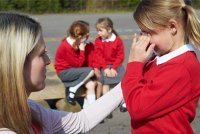School Change: Make Room for “Wrongdoing”
British Prime Minister Winston Churchill once said, "To improve is to change; to be perfect is to change often."
In schools, we ask kids to change all the time, from one class and teacher to the next, and from one school year to the next. In fact, we often have kids change every 40-50 minutes during each school day. During these transitions, they have to change gears as they readjust to new behavioral, academic, social and neurological demands and expectations.
Kids are not perfect. They make mistakes. They trip up. They recover and show resolve. And they invariably show how remarkable they are on a daily basis by enduring the gantlet of a traditional school setting, marching to the drumbeat of the industrial model of schooling, a model constructed around time, space, order, efficiency and acculturation. Grant Lichtman highlighted these conditions in his recent TED Talk:
As educators, we have high expectations for our students -- and we should have these expectations. But we need to remember that we are working with kids who have ups and downs, good days and bad days, struggles at home and with peers, and we cannot expect them to be perfect, nor do we want them to be perfect.
A former colleague of mine used to say, "We don't want them all baked and cooked. If we did, there would be no work to do."
Learning by "Wrongdoing"
Blogger Bruce Dixon quotes author Seth Godin, who writes about "learning from doing things wrong." There is a need for students to learn from wrongdoing instead of demanding rightdoing from them all the time.
Wrongdoing is where the good stuff is.
Every time a student errs, or steps outside the rules, or transgresses community norms and expectations, there is a golden opportunity to connect with this young person, his or her family and the teaching team to build stronger relationships through trust and partnership.
When a student "gets in trouble," the he or she is asked to reflect on the wrongdoing as a way to get to the rightdoing and to examine why this whole situation occurred. And the goal is to build what Dan Pink terms "Drive -- autonomy, mastery and purpose" to move beyond "compliance."
If schools take the time to allow these conversations and dialogues to happen, students can develop the intrinsic motivation to do the right thing. The starting point is the student, and the work is to build out from there, instead of starting from the school's viewpoint and then trying to work inward toward the students.
It's a little like the scene from Apollo 13 when the scientists are frantically trying to find a solution to getting a square peg into a round hole.
Too often, schools can view wrongdoing as the square peg instead of recognizing that the hole itself is the wrong shape. Schools need to make time for meeting students where they are instead of where they're traditionally "supposed to be."
Growth as a Process
The process of growth is just that -- a process. It takes time, patience, perseverance, compassion and a willingness to dig deep toward the root of what motivates and drives each student to overcome wrongdoing and get to rightdoing.
In Grant Lichtman's TED Talk (see the first video in this post), he highlights the sea change that he's observing in schools throughout his journeys around the country, talking with principals and teachers as he tries to understand school change. He makes the distinction between change being hard versus uncomfortable, and he sees the pendulum shifting back toward John Dewey's model of schooling with the child at the center, and viewing students as "self-evolving learners." Lichtman urges schools to embrace the "methodology of constant change" -- in essence, to move to that Churchillian view of change, where "to be perfect is to change often."
A key component of this change needs to center on how schools view student behavior, to start seeing wrongdoing as rightdoing in terms of moving the needle back toward Dewey's child-centered view of progressive learning, popularized over 100 years ago. Kids need to be able to get out of their chairs, move around, engage, be messy and ward off being controlled by an outmoded view of schooling centered on keeping messiness out of the picture. This can be challenging for teachers to do, and it invites a bit of a journey into the unknown, which can be unsettling and untidy.
But neither does it mean letting the learning environment descend into chaos, without structure. In fact, the most progressive learning environments are often the most structured, in that through the structure, freedom and autonomy are celebrated and encouraged. The progressive classroom, though, is not a square peg but a round hole, with a lot of room for child atoms to collide, bounce off each other, combine and grow.
If schools can truly give students the space for wrongdoing, then the opportunity for growth is immense. Through these moments, students learn how to own their behavior, to become autonomous, intrinsically motivated, self-evolving learners instead of square pegs that struggle to fit into the round hole.
